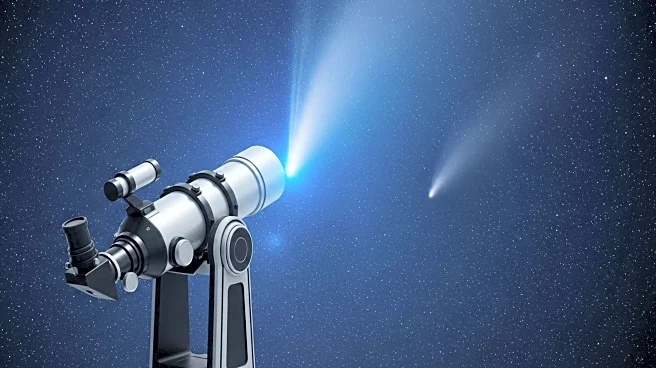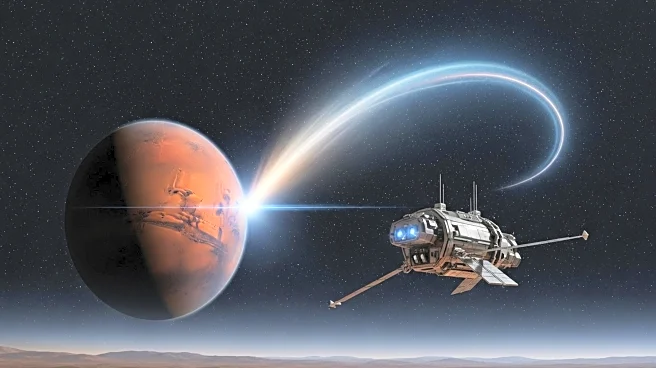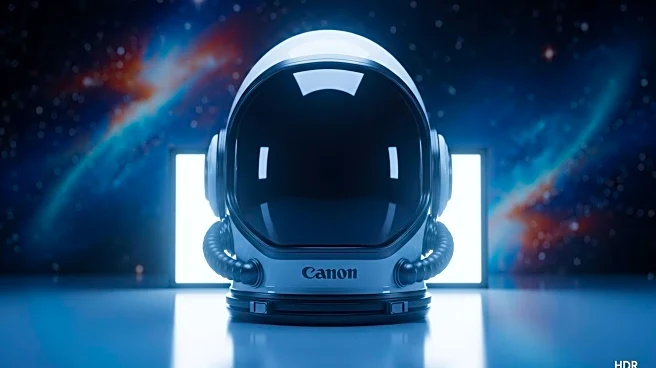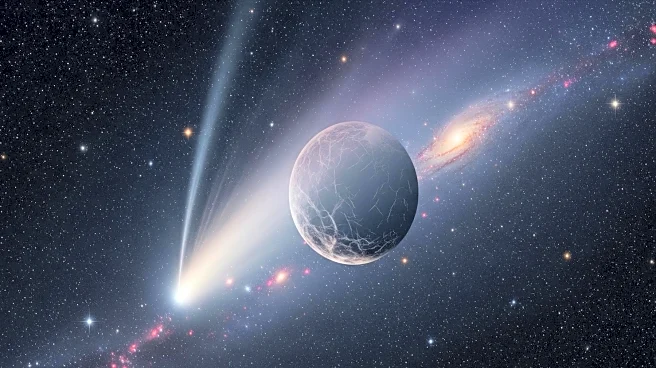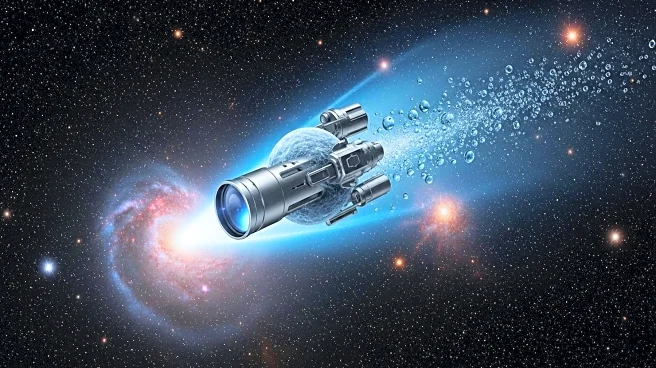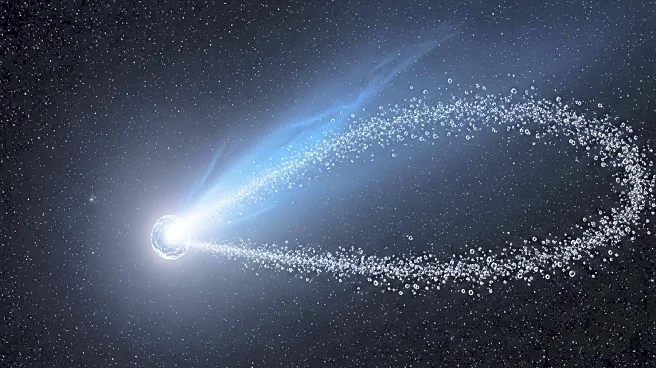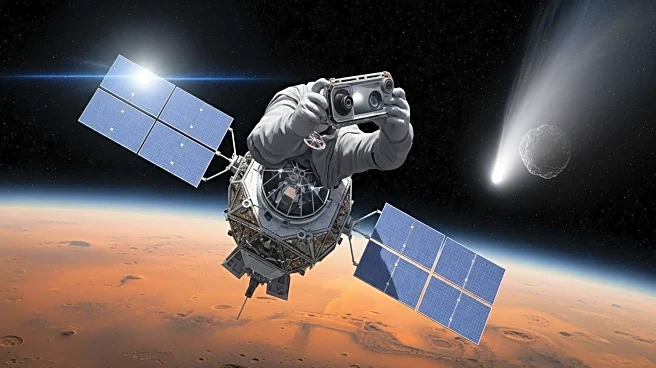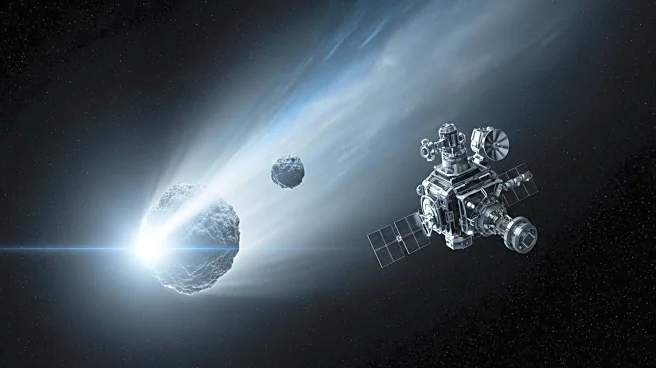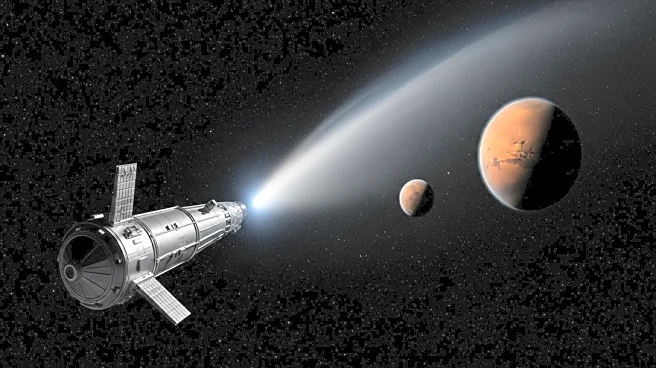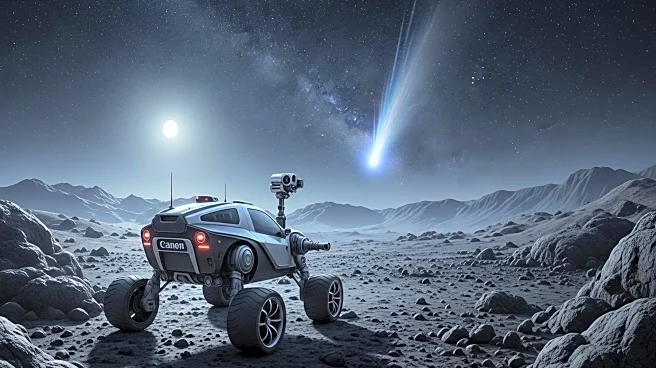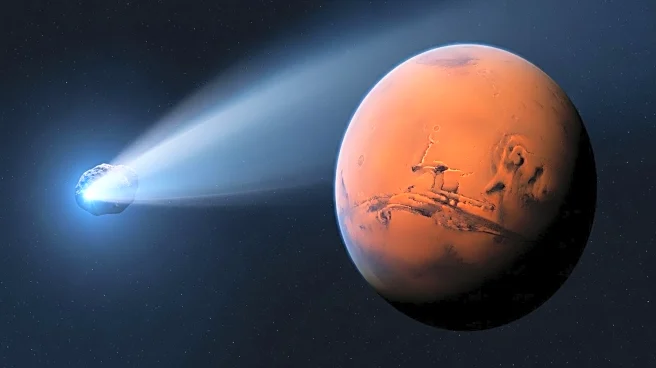What is the story about?
What's Happening?
NASA's Neil Gehrels Swift space telescope has detected significant ultraviolet emissions from the interstellar comet 3I/ATLAS, indicating the presence of hydroxyl gas, a byproduct of water. This discovery suggests that the comet is releasing water vapor at a rate of approximately 88 pounds per second, akin to a fire hose at full blast. The emissions were observed at a heliocentric distance of about three astronomical units, which is notably far from the Sun, where such activity is unexpected. Typically, comets begin to sublimate, or transform from solid to gas, as they approach the Sun. The findings, published in The Astrophysical Journal Letters, imply that 3I/ATLAS may contain substantial water reserves. This phenomenon provides insights into the comet's origin, possibly from the center of the Milky Way, and its age, estimated to be billions of years older than the Sun.
Why It's Important?
The detection of water emissions from 3I/ATLAS is significant as it offers a glimpse into the chemical composition of interstellar objects, which differ from local comets. This discovery enhances understanding of the ingredients necessary for life's chemistry beyond our solar system. The comet's unique characteristics, such as its high carbon dioxide to water ratio, challenge existing theories about comet formation and behavior. As interstellar objects like 3I/ATLAS pass through our solar system, they provide valuable data on the evolution of star systems and the cosmos. The study of such objects can lead to breakthroughs in astrophysics and planetary science, potentially influencing future space exploration and research.
What's Next?
3I/ATLAS is currently positioned behind the Sun, making it difficult to observe from Earth. However, spacecraft near Mars have managed to capture images, and the comet is expected to become visible again in late November. As scientists continue to study 3I/ATLAS, they aim to uncover the mechanisms driving its water vapor emissions. The comet's return to visibility will allow for further observation and analysis, potentially revealing more about its composition and origin. Researchers are keen to compare 3I/ATLAS with other interstellar objects, such as 'Oumuamua and Borisov, to refine models of comet formation and interstellar travel.
Beyond the Headlines
The study of 3I/ATLAS raises questions about the ethical and scientific implications of interstellar exploration. Understanding the chemical makeup of such objects could inform the search for extraterrestrial life and the development of technologies for deep space missions. Additionally, the comet's journey through the galaxy highlights the dynamic nature of star systems and the potential for gravitational interactions to alter celestial paths. As scientists delve deeper into the mysteries of interstellar comets, they may uncover new principles governing the universe's structure and evolution.
AI Generated Content
Do you find this article useful?
